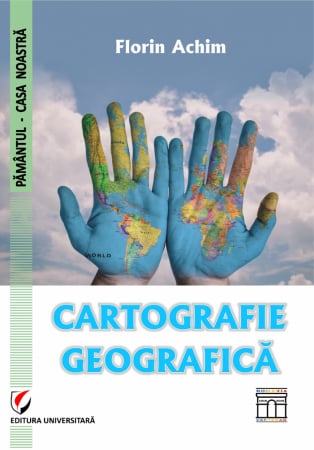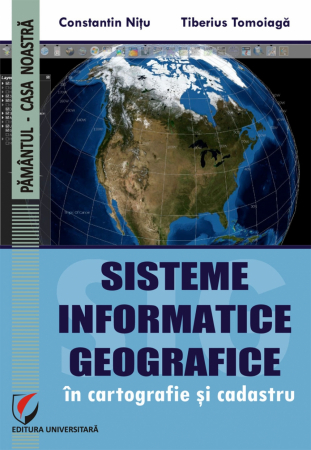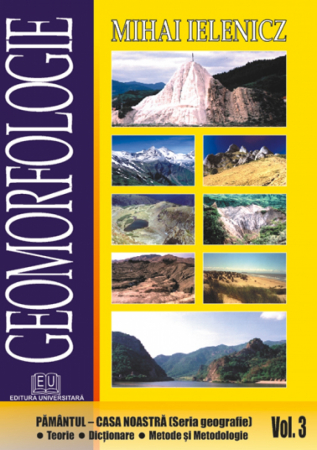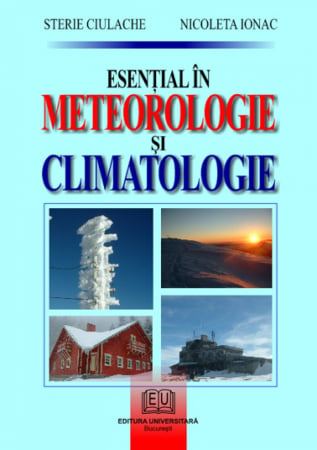ORDERS RECEIVED IN THE PERIOD 19.12.2025 - 07.01.2026 WILL BE FULFILLED STARTING ON 08.01.2026
6359.png) The action of water on dikes and dams in the ground and anchorages. From the author's Romanian and American experience - Vlad Perlea
The action of water on dikes and dams in the ground and anchorages. From the author's Romanian and American experience - Vlad Perlea
6359.png)
Publisher: Editura Universitară
Author: Vlad Perlea
Edition: I
Pages: 234
Publisher year: 2023
ISBN: 978-606-28-1603-2
DOI: https://doi.org/10.5682/9786062816032
Product Code:
9786062816032
Do you need help?
0745 200 357
- Description
- Download (1)
- Authors
- Content
- More details
- Reviews (0)
The current volume is addressed to hydrotechnical engineers of all ages: students and young engineers will find the basic notions for designing stable constructions to retain water from the ground, and those engaged in the exploitation of existing constructions will find here safety assessment methods, possible ways accidents and the necessary actions to avoid them. It presents in detail and based on concrete cases the possibility of yielding after earthquakes and the risk analysis.
-
The action of water on dikes and dams in the ground and anchorages. From the author's Romanian and American experience
Download
VLAD PERLEA was born in Timisoara (1937) and graduated in 1959 from the Institute of Construction (now the Technical University of Construction) Bucharest, Faculty of Civil and Industrial Construction. In 1974, he obtained the title of Doctor of Engineering in soil and foundation mechanics. Between 1960 and 1985 he worked as a principal researcher at the Institute of Hydrotechnical Studies and Research in Bucharest. In 1985, he moved with his family to the United States of America, where between 1992 and 2016, he worked as a geotechnical engineer at the prestigious US Army Corps of Engineers dam building institution.
1 Word before / 9
2 The possible consequences of uncontrolled infiltrations (Famous cases) / 13
2.1. Piers (Netherlands, New Orleans) / 13
2.2. Earth dams (Baldwin Hills, Teton) / 16
2.3. Waste dumps (Certej-Sacaramb, Buffalo Creek) / 21
3 The consequences of seismic action on saturated ground deposits / 25
3.1. Piers / 25
3.2. Earth dams / 31
3.3. Waste dumps / 34
4 Recalling some notions from the infiltration theory / 37
4.1. Permeability / 37
4.2. Darcy's Law / 37
4.3. The flow of water through the earth and its interaction with the solid skeleton / 43
4.4. Forces generated by infiltrations / 47
4.5. Infiltration control / 48
4.5.1. Filters and drains / 48
4.5.2. Self-discharging wells / 51
5 Increase of pore water pressure in static conditions or as a result of seismic action / 55
5.1. Theoretical bases of spontaneous liquefaction (in static conditions) / 55
5.2. The behavior of saturated sands under cyclic loading / 59
5.2.1. Drained cyclic loading / 59
5.2.2. Undrained cyclic loading / 61
5.3. Pore water pressure response to cyclic loading / 62
5.4. Intrinsic factors that condition sensitivity to liquefaction / 63
5.4.1. Granulometric composition and particle shape / 64
5.4.2. Characteristics of the state of the land in storage / 66
5.4.2.1. The state of encroachment / 66
5.4.2.2. The state of humidity and the drainage conditions of the liquefiable layer in the warehouse / 67
5.4.2.3. The state of efforts in the massif and the history of efforts / 68
5.4.2.4. Anisotropy of the state of efforts and initial (static) shear unit efforts / 70
5.4.2.5. The seismic history / 73
5.4.3. Geological factors / 75
5.4.4. Empirical (estimate) criterion for assessing susceptibility to liquefaction / 76
5.5. Are cohesive soils liquefiable? / 76
5.5.1. Cases of liquefaction of cohesive soils / 78
5.5.2. The physical characteristics of liquefiable cohesive soils / 80
5.6. Simplified calculation of soil liquefaction / 82
5.6.1. The liquefaction safety coefficient / 82
5.6.2. Estimation of earthquake-induced cyclic shear stresses / 82
5.6.3. Evaluation of the liquefaction resistance of sandy soils / 85
5.6.3.1. Using standard dynamic penetration results, SPT / 85
5.6.3.2. Using the results of static cone penetration, CPT / 86 /
5.6.3.3. Magnitude correction factor / 87
5.6.3.4. The correction factor for high efforts / 87
5.6.3.5. Correction factor for static shear stresses / 87
5.7. Excess pore water pressure corresponding to various liquefaction safety coefficients / 88
5.8. Evaluation of the resistance to cyclical demands of cohesive soils / 90
5.9. Residual resistance / 92
5.9.1. Liquefaction consequences - general considerations / 92
5.9.2. Resistance to tangential efforts of the liquefied material / 92
5.9.3. Evaluation of the residual strength of sandy soils / 93
5.9.4. Evaluation of the residual strength of clayey soils / 94
6 Possible failure modes and their probability / 95
6.1. External erosion / 95
6.1.1. Example of external erosion in sedimentary rocks and its study / 96
6.1.2. Example of external erosion in altered eruptive rock / 100
6.2. Internal erosion / 105
6.2.1. Phases of surrender / 108
6.2.2. Possible ways of internal erosion / 109
6.2.3. Initiation of internal erosion / 115
6.2.4. Continuation of internal erosion / 116
6.2.5. Progression of internal erosion / 116
6.2.6. Formation of a breach / 117
6.2.7. Erosion detection, intervention and repair / 117
6.3. Yielding due to the action of suppression / 117
6.3.1. Theoretical considerations / 117
6.3.2. Unusual case of failure due to underpressure / 119
6.4. Yielding by spontaneous liquefaction (in static conditions) / 120
6.4.1. Waste settling ponds from the mining industry / 120
6.4.2. Geotechnical properties of materials stored by hydraulic deposition / 123
6,4.3. Analysis of the stability of deposits made by hydraulic deposition / 126
6.4.4. Evaluation of the stability of waste deposits from the coal mining industry / 130
6.5. The combined action of pore water and dynamic seismic stresses / 131
6.5.1. Famous case of disposal by liquefaction / 131
6.5.2. Unusual cases of effects of earthquakes on saturated earth deposits / 132
7 Numerical modeling of the deformation of earth dams following the combined action of water and seismic stress / 135
7.1. Failure Analysis of San Fernando Aval Dam in California / 135
7.1.1. Initial analysis / 135
7.1.2. Modeling with the calculation program FLAC / 135
7.2. Seismic deformation analysis of the San Fernando Amonte dam / 137
7.2.1. The dam before the 1971 / 137 earthquake
7.2.2. The behavior of the dam during the 1971 / 137 earthquake
7.2.3. Mathematical modeling of dam behavior / 138
7.2.3.1. Dynamic request / 138
7.2.3.2. Calculation section / 139
7.2.3.3. Calculation assumptions / 139
7.2.3.4. Results / 140
7.3. Tuttle Creek Dam Case Study in Kansas / 143
7.3.1. Deformation evaluation with the DYNAFLOW / 144 program
7.3.2. Deformation assessment with the TARA-3 / 145 program
7.3.3. Modeling the dynamic behavior of earth dams with FLAC / 147
7.4. Case studies of two dams in California / 148
7.4.1. Modeling the behavior of various earth materials / 150
7.4.2. Simulation of the load history before the seismic stress / 151
7.4.3. Success / 152 dam analysis results
7.4.4. Results of the analysis of the Isabella auxiliary dam / 154
7.5. Applications of seismic deformation modeling of earth dams / 160
7.5.1. Safety evaluation of dams in operation / 160
7.5.1.1. Initial evaluation / 162
7.5.1.2. Simplified methods / 165
7.5.1.3. Limit balance methods for the condition after the earthquake / 169
7.5.1.4. Advanced methods / 169
7.5.2. Designing remedial solutions / 170
7.5.3. Risk analysis / 172
8 Risk management / 173
8.1. The need for risk analysis / 173
8.2. Safety of existing dams / 173
8.3. Theoretical considerations / 176
8.3.1. History and definitions / 176
8.3.2. The activity classification system for ensuring the safety of dams / 178
8.3.3. The U.S. Dam Safety Risk Management Portfolio / 180
8.3.4. Inspections / 181
8.4. Case studies / 188
8.4.1. Tuttle Creek Dam in Kansas / 188
8.4.1.1. Seismicity of the area where the dam is located / 189
8.4.1.2. Characterization of the liquefaction of soils from the field and dam / 194
8.4.1.3. Evaluation of the possible seismic deformation of the unconsolidated dam / 195
8.4.1.4. The possible consequences of the dam failure / 195
8.4.2. Success Dam in California / 196
8.4.2.1. The cross section analyzed / 197
8.4.2.2. Computational seismic accelerograms. / 197
8.4.2.3. The coincident level of the water in the reservoir / 199
8.4.2.4. Results of seismic deformation calculations / 199
8.4.2.5. The choice of potential failure modes (PFMA, Potential Failure Modes Analysis) / 200
8.4.2.6. Rules for exploiting the accumulation / 207
8.4.2.7. Risk analysis / 208
8.4.3. Isabella Auxiliary Dam of California / 214
8.4.3.1. Analysis of potential failure modes / 214
8.4.3.2. Potential mode of failure "Rupture along the Kern Canyon fault resulting in transverse cracks and seepage" / 217
8.4.3.3. Potential mode of failure "Seepage through the foundation soil and internal erosion along the drain pipe" / 217
8.4.3.4. Potential failure mode "Infiltration and internal erosion through transverse cracks caused by the earthquake" / 217
8.4.3.5. The conclusions of the risk analysis / 218
9 Bibliographic references / 219
2 The possible consequences of uncontrolled infiltrations (Famous cases) / 13
2.1. Piers (Netherlands, New Orleans) / 13
2.2. Earth dams (Baldwin Hills, Teton) / 16
2.3. Waste dumps (Certej-Sacaramb, Buffalo Creek) / 21
3 The consequences of seismic action on saturated ground deposits / 25
3.1. Piers / 25
3.2. Earth dams / 31
3.3. Waste dumps / 34
4 Recalling some notions from the infiltration theory / 37
4.1. Permeability / 37
4.2. Darcy's Law / 37
4.3. The flow of water through the earth and its interaction with the solid skeleton / 43
4.4. Forces generated by infiltrations / 47
4.5. Infiltration control / 48
4.5.1. Filters and drains / 48
4.5.2. Self-discharging wells / 51
5 Increase of pore water pressure in static conditions or as a result of seismic action / 55
5.1. Theoretical bases of spontaneous liquefaction (in static conditions) / 55
5.2. The behavior of saturated sands under cyclic loading / 59
5.2.1. Drained cyclic loading / 59
5.2.2. Undrained cyclic loading / 61
5.3. Pore water pressure response to cyclic loading / 62
5.4. Intrinsic factors that condition sensitivity to liquefaction / 63
5.4.1. Granulometric composition and particle shape / 64
5.4.2. Characteristics of the state of the land in storage / 66
5.4.2.1. The state of encroachment / 66
5.4.2.2. The state of humidity and the drainage conditions of the liquefiable layer in the warehouse / 67
5.4.2.3. The state of efforts in the massif and the history of efforts / 68
5.4.2.4. Anisotropy of the state of efforts and initial (static) shear unit efforts / 70
5.4.2.5. The seismic history / 73
5.4.3. Geological factors / 75
5.4.4. Empirical (estimate) criterion for assessing susceptibility to liquefaction / 76
5.5. Are cohesive soils liquefiable? / 76
5.5.1. Cases of liquefaction of cohesive soils / 78
5.5.2. The physical characteristics of liquefiable cohesive soils / 80
5.6. Simplified calculation of soil liquefaction / 82
5.6.1. The liquefaction safety coefficient / 82
5.6.2. Estimation of earthquake-induced cyclic shear stresses / 82
5.6.3. Evaluation of the liquefaction resistance of sandy soils / 85
5.6.3.1. Using standard dynamic penetration results, SPT / 85
5.6.3.2. Using the results of static cone penetration, CPT / 86 /
5.6.3.3. Magnitude correction factor / 87
5.6.3.4. The correction factor for high efforts / 87
5.6.3.5. Correction factor for static shear stresses / 87
5.7. Excess pore water pressure corresponding to various liquefaction safety coefficients / 88
5.8. Evaluation of the resistance to cyclical demands of cohesive soils / 90
5.9. Residual resistance / 92
5.9.1. Liquefaction consequences - general considerations / 92
5.9.2. Resistance to tangential efforts of the liquefied material / 92
5.9.3. Evaluation of the residual strength of sandy soils / 93
5.9.4. Evaluation of the residual strength of clayey soils / 94
6 Possible failure modes and their probability / 95
6.1. External erosion / 95
6.1.1. Example of external erosion in sedimentary rocks and its study / 96
6.1.2. Example of external erosion in altered eruptive rock / 100
6.2. Internal erosion / 105
6.2.1. Phases of surrender / 108
6.2.2. Possible ways of internal erosion / 109
6.2.3. Initiation of internal erosion / 115
6.2.4. Continuation of internal erosion / 116
6.2.5. Progression of internal erosion / 116
6.2.6. Formation of a breach / 117
6.2.7. Erosion detection, intervention and repair / 117
6.3. Yielding due to the action of suppression / 117
6.3.1. Theoretical considerations / 117
6.3.2. Unusual case of failure due to underpressure / 119
6.4. Yielding by spontaneous liquefaction (in static conditions) / 120
6.4.1. Waste settling ponds from the mining industry / 120
6.4.2. Geotechnical properties of materials stored by hydraulic deposition / 123
6,4.3. Analysis of the stability of deposits made by hydraulic deposition / 126
6.4.4. Evaluation of the stability of waste deposits from the coal mining industry / 130
6.5. The combined action of pore water and dynamic seismic stresses / 131
6.5.1. Famous case of disposal by liquefaction / 131
6.5.2. Unusual cases of effects of earthquakes on saturated earth deposits / 132
7 Numerical modeling of the deformation of earth dams following the combined action of water and seismic stress / 135
7.1. Failure Analysis of San Fernando Aval Dam in California / 135
7.1.1. Initial analysis / 135
7.1.2. Modeling with the calculation program FLAC / 135
7.2. Seismic deformation analysis of the San Fernando Amonte dam / 137
7.2.1. The dam before the 1971 / 137 earthquake
7.2.2. The behavior of the dam during the 1971 / 137 earthquake
7.2.3. Mathematical modeling of dam behavior / 138
7.2.3.1. Dynamic request / 138
7.2.3.2. Calculation section / 139
7.2.3.3. Calculation assumptions / 139
7.2.3.4. Results / 140
7.3. Tuttle Creek Dam Case Study in Kansas / 143
7.3.1. Deformation evaluation with the DYNAFLOW / 144 program
7.3.2. Deformation assessment with the TARA-3 / 145 program
7.3.3. Modeling the dynamic behavior of earth dams with FLAC / 147
7.4. Case studies of two dams in California / 148
7.4.1. Modeling the behavior of various earth materials / 150
7.4.2. Simulation of the load history before the seismic stress / 151
7.4.3. Success / 152 dam analysis results
7.4.4. Results of the analysis of the Isabella auxiliary dam / 154
7.5. Applications of seismic deformation modeling of earth dams / 160
7.5.1. Safety evaluation of dams in operation / 160
7.5.1.1. Initial evaluation / 162
7.5.1.2. Simplified methods / 165
7.5.1.3. Limit balance methods for the condition after the earthquake / 169
7.5.1.4. Advanced methods / 169
7.5.2. Designing remedial solutions / 170
7.5.3. Risk analysis / 172
8 Risk management / 173
8.1. The need for risk analysis / 173
8.2. Safety of existing dams / 173
8.3. Theoretical considerations / 176
8.3.1. History and definitions / 176
8.3.2. The activity classification system for ensuring the safety of dams / 178
8.3.3. The U.S. Dam Safety Risk Management Portfolio / 180
8.3.4. Inspections / 181
8.4. Case studies / 188
8.4.1. Tuttle Creek Dam in Kansas / 188
8.4.1.1. Seismicity of the area where the dam is located / 189
8.4.1.2. Characterization of the liquefaction of soils from the field and dam / 194
8.4.1.3. Evaluation of the possible seismic deformation of the unconsolidated dam / 195
8.4.1.4. The possible consequences of the dam failure / 195
8.4.2. Success Dam in California / 196
8.4.2.1. The cross section analyzed / 197
8.4.2.2. Computational seismic accelerograms. / 197
8.4.2.3. The coincident level of the water in the reservoir / 199
8.4.2.4. Results of seismic deformation calculations / 199
8.4.2.5. The choice of potential failure modes (PFMA, Potential Failure Modes Analysis) / 200
8.4.2.6. Rules for exploiting the accumulation / 207
8.4.2.7. Risk analysis / 208
8.4.3. Isabella Auxiliary Dam of California / 214
8.4.3.1. Analysis of potential failure modes / 214
8.4.3.2. Potential mode of failure "Rupture along the Kern Canyon fault resulting in transverse cracks and seepage" / 217
8.4.3.3. Potential mode of failure "Seepage through the foundation soil and internal erosion along the drain pipe" / 217
8.4.3.4. Potential failure mode "Infiltration and internal erosion through transverse cracks caused by the earthquake" / 217
8.4.3.5. The conclusions of the risk analysis / 218
9 Bibliographic references / 219
At my age of 85-years, it is my privilege to accumulate many years of experience in the design and maintenance of hydraulic structures, particularly of earth and rockfill dams. The first 25 years of my activity were in Romania, with the Hydraulic Engineering Research Institute in Bucharest between 1960 – 1985; 35 years of experience in the United States of America followed: 1985 – 1992 with Bowser-Morner & Associates, Inc. in Dayton, Ohio, 1992 – 2006 with U.S. Army Corps of Engineers, Kansas City District, Missouri, 2006 – 2016 with U.S. Army Corps of Engineers, Sacramento District, California and 2016 – 2020 with AECOM Technical Services, Inc., Sacramento, California.
The idea of sharing our experience with the Romanian engineering community belonged to my former fellow and good friend Alexandru (Nake) Constantinescu, who was intended to cover the problems related to concrete dams. Unfortunately Nake passed away before actually started to work on this project. It is my duty, I believe, to finalize (in part) our project, publishing my share of the projected book.
The author
The idea of sharing our experience with the Romanian engineering community belonged to my former fellow and good friend Alexandru (Nake) Constantinescu, who was intended to cover the problems related to concrete dams. Unfortunately Nake passed away before actually started to work on this project. It is my duty, I believe, to finalize (in part) our project, publishing my share of the projected book.
The author
If you want to express your opinion about this product you can add a review.
write a review

![The action of water on dikes and dams in the ground and anchorages. From the author's Romanian and American experience - Vlad Perlea [1] The action of water on dikes and dams in the ground and anchorages. From the author's Romanian and American experience - Vlad Perlea [1]](https://gomagcdn.ro/domains/editurauniversitara.ro/files/product/large/actiunea-apei-asupra-digurilor-si-barajelor-din-pamant-si-anrocamente-din-experienta-romana-si-americana-a-autorului-260171.jpg)














